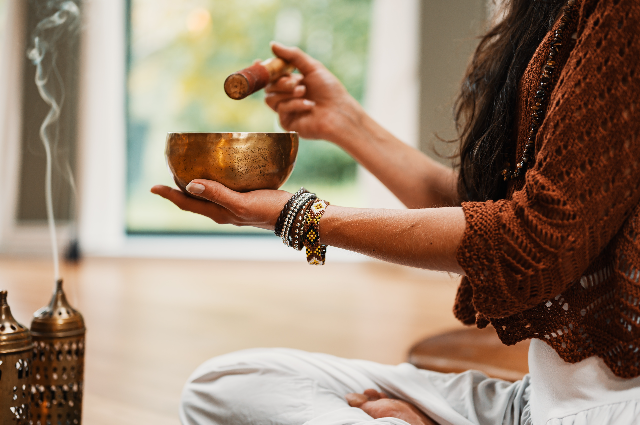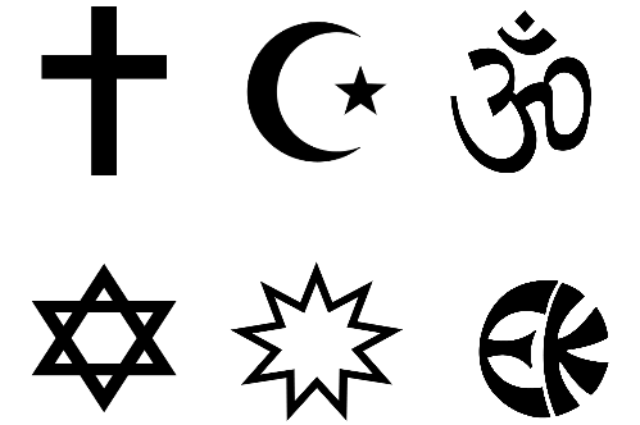
“Social capital may turn out to be a prerequisite for, rather than a consequence of, effective computer–mediated communication. Social capital makes an enormous difference in our lives. Social capital makes us smarter, healthier, safer, richer, and better able to govern a just and stable economy” observes Robert D Putnam, the prominent American political scientist and educator best known for his study of social capital.
What Mr Putnam has commented on America, considered the most economically forward nation and a leading country with materialistic concept is equally applicable to all nations particularly to our country which is considered as a spiritually oriented nation.
While Indian thinking is characterized as spiritual and mystical in nature, Western thinking is scientific, logical, rational, materialistic and individualistic. The pursuit of truth and inner happiness have been kept above everything else in Indian living, but more important than even these two is, the fact of difference that these two make in the quality and style of life of an individual. Western style of thinking and living is focused upon individualism. Philosophy in the west is separate and independent of religion. Reason and logic are given primacy to other aspects of life in western philosophy. Indian philosophy is integrated with religion while Western philosophy is opposite and independent of religion as we are all well aware of.
For us, Spirituality is basically tuning the mind to look at one's self and to be beyond the limitations of space and time. Indian religious disposition is the most ancient one and yet, is modern, as it suits the conditions of the present world and also is practicable even today.
This dynamic nature of our philosophical concepts based on a firm foundation of religious faiths makes it one of the most sagacious and vibrant perceptions in the world. Our land is considered an exalted source for an incessant stream of rich philosophical thoughts flowing for centuries but also an edifice of noble sages and riṣis who have taught us the ethical and moral life to aim at a perpetual goal in our life – the final liberation which is cessation from birth-death circle. In our country, Philosophy and Religion are not viewed independently but they are intertwined and supplementing each other. Our religions talk of Final liberation through moral code of conduct – freeing from bondage – of course through differing means. Life with spiritual predilection and moral preference has been given emphasis and the way of life was based more on this than on mere materialistic pursuits.
No doubt the scientific growth imbibing new knowledge and outlook in us has to somewhat made our superstitions and false dogmas vanish. But unfortunately, it has shaken our faith in spiritual and human values.

Nowadays due to unbelievable progress in science and technology, despite our efficient means of communication and transportation, the distance between our hearts is increasing day by day. With increasing technological advancement man becomes an island and spends more time with his own modern gadgets, there’s less time for joining community groups and socializing with neighbours, friends and even family. It is a common sight to see that even within a family each individual is a compartment with his or her Smartphone which is the constant companion. It is sticking on to the body throughout the day is to be interrupted with messages from social media, emails and texts. Something fundamental in human behaviour has changed: our sense of phone etiquette and propriety has caused us to get out of whack in our interactions with one another.
Till a few years ago, we were not having the facility of cell phones – not even one land phone in many houses. We didn’t own vehicles for our uses. Most of our near relatives were in villages –may be far off in some cases. But even then we had all been maintaining a hearty relationship with all our relatives, visiting them frequently and speaking to them as routinely as possible. But everything is lost now. No more personal visits, no more dialogues and no meetings taking place with relatives!
- What a downfall in our social outlook and what has gone wrong in our system?
The ‘bonds’ with close friends, the ‘bridges’ with acquaintance and the ‘linkages’ in the social ladder are all missing in each case. Here alone “Social capital” has to play a vital role which is nothing but the asset that counts for most in our daily life like benevolence, compassion, kind-heartedness, companionability, comradeship, sympathy and social intercourse among the individuals and families who make up a social unit.
Social capital which is defined as “those tangible assets that count for most in the daily lives of people: namely goodwill, fellowship, sympathy, and social intercourse among the individuals and families who make up a social unit” and this Social capital can be built up with pilgrimages –particularly the spiritual pilgrimages.
Instead of harmonious and homogeneous hearts we always find hearts with hatred and hostility in most cases ignoring the values of co-existence and co-operation which are the very essential of our very existence. Our achievements in any field whether in the arena of social justice or economic equality have not brought out any tangible tranquility in the humanity in general we are all aware.
- What is the reason for this mistrust and misunderstanding between individuals?
The reason for lack of harmony between individuals can be ascribed to the ego-centric attitude of the persons involved, isolating himself from others, that stimulates all such mistrust if not malice.
That is the reason why our scriptures have recommended “tirta yatra” to be made by any individual at least once in his life time which tunes the mind towards harmony and tranquillity and understanding. Tirta means holy water and yatra means pilgrimage. It is a spiritual experience and exposure.
Derived from Sanskrit, tirta yatra literally means “sacred holy water pilgrimage”: a journey (normally of a substantial distance) to seek and or collect holy water. These days the original meaning is somewhat lost and tirta yatra means simply a holy or spiritual pilgrimage.
Tirta yatra, unlike spiritual journeys by holy men, can be carried out by anyone of any caste and socio-economic status. It is believed that titra yatra brings one closer to God, as well as fellow pilgrims, and plays an important role in the philosophy of the balance between humans, god and nature.
As per our scriptures a Yatri, the individual who undertakes the pilgrimage is supposed to do his Yatra barefoot. Even though this is not followed strictly now days, still we observe, this is practiced in Sabharimala Yatra and while claiming holy hills like Tirupathi and Pazhani to quote a few, familiar to us. Such bare-foot Yatras, the spiritual pilgrimages, with uniform dress code, ensures equality and brotherhood amongst the pilgrims and can be taken as the first step towards social harmony.

Visiting a sacred place is believed by the pilgrim to purify the self and bring one closer to the divine as well as within themselves in all religions be it Hinduism or Buddhism or Christianity or Islam.
In present times, pilgrims have become highly organized affairs, with specialized tourism companies catering to the need of people. The governments – both State and Central - are sometimes involved in the organizations of annual pilgrims, stipulating numbers, registering the pilgrims and regulating their flow and even subsidising them. The World Tourism Organization defines tourists as people "traveling to and staying in places outside their usual environment for not more than one consecutive year for leisure, business and other purposes".
The U N, very recently, convened the 1st International Conference on Spiritual Tourism for Sustainable Development in Hanoi, Vietnam and the term Spiritual Tourism was defined as the first issue. Believers taking part in religious pilgrimages such as Muslims doing the Hajj or Buddhists visiting the four sacred sites in India and Nepal or the Christians who walk the ‘The Way of St. James’ are primarily recognized as "spiritual tourists". This is as far as International tourism is concerned. But our domestic spiritual tourism can also be developed in the similar manner as we have more potential spiritual destinations for all religious faiths including Sikhs and Jains apart from the major Indian religious followers of Hinduism, Buddhism, Christianity and Islam.
Earlier worldwide Tourism has always been on three “S” s Sun, Sand and Sensation but now being replaced with new set of three “S”s Serenity, Sustainability and Spirituality. If this evolution of values in tourism gains traction and is ongoing then there are some serious implications.
In recent times, there have sprung new organizations like the International Institute of Peace through Tourism, which holds a banner to project the power of tourism to facilitate peace and for peace to facilitate tourism. This the organization, feels will be achieved through Spiritual Tourism only. The government now wants to build a ‘Brand India’ –with focus on Five Ts -Talent, Tradition, Tourism, Trade and Technology. These are the elements which have immense potentiality in near future to turn our country into a real Super power – with the appellation changed to “Developed nation” from its present one of “Developing nation”. We can have a sixth ‘T’ added to the list and that is Transcendence – the spiritual experience one can derive by undertaking a pilgrimage.
To quote Ahmed Badreddin Hassoun, the Grand Mufti of Syria, who said,
“India’s pluralist society is an inspiration for conflict-prone countries of the West Asian region and despite poverty and economic hardship, India has an important message for our region, as it shows that people can live despite differences and diversity”.
India’s diversity has been the source of inspiration to many outsiders to put down in writing their perceptions of the country’s culture. These writings pose a complex and often conflicting picture of the culture of India. Yes, India is a multicultural but contradicting yet united country which is imbibed with diversity. Cultural diversity brings about new social and political challenges often triggered by fear and intolerance among different faiths shaking the very cohesive base of any society.
One of the challenges in modern democratic era is how to preserve the individual cultural identity in a multi-cultural scenario and how to accept the other culture or cultures mentally for a harmonious and cohesive existence. Often we find the acceptance is not full or complete which results in unrest.
The famous French philosopher, Simon de Beauvour , once said,
“The fact that we are human beings is infinitely more important than all peculiarities that distinguish human beings from one another”.
Yes, if this realization that “we are human first and then only our other identities” is brought to the fore in every action of us - nothing would ensure cohesion in society other than this attitude.
In respect of religions in India, there is no end of its range. India is the place of reunion of many religions and languages of the world. Here, the Hindus, the Sikh, the Christians, the Muslims, the Jews, the Buddhists, the Jains and the Parsis live abreast of each other.
Social Capital is perhaps a new word coined in the west recently but it is very much prevalent in our nation since long. We have not named it so far and it is an irony that we need western scholars to point out to us.
Many times we have found in our country the inter community dialogues have been found to be bearing fruit as we can observe we have a unique culture “Indian Culture” the traces of which have deeply penetrated in all religions –both indigenous and imported and accepted. We find many common cultural interaction between the native Hinduism and other inherited religions .One significant reason is the fact that the overwhelmingly large proportion of Muslims or Christians is having a Hindu-past and the vestige of the same is carried on with them. The practice of flocking to pilgrimages to personal tombs and worshiping is absorbed from Hindu culture of visiting temples. Even though the origin for Sufism is fixed to Iran ,Indian Sufism has remarkable influence of the Hindu practices of Yoga, Pranayama and the concept of Sanyasa resulting in the appearance of many Muslim Babas who attract disciples form both religions. Moghul emperors patronized Indian dances and we have many off-shoot styles like Kathak, which is an admixture of both the cultures. Even in the caste system Islam is not spared from Hindu influence.
If you analyze the other major religion, Indian Christians, many in that religion still preserve the surnames of their pre-conversion days. In many cases they also have Hindu first names. This makes them completely identical with the Hindus. The reason could partly lie in the fact that many converted personalities’ philosophical pursuit that was the prime reason for the conversion. There are many religious preachers with the epithet Sastri – a pure Sanskrit word meaning a knowledgeable scholar.

Source: wikipedia.org
The Sanskrit words like Vedas and Agamas, Upavasa are all freely used by Christian brothers and the ladies apply tilak (marks) on their foreheads. Many Christians wedding are solemnized with the tying up of mangalasutra on the bride’s necks which is the Hindu way of solemnizing marriages. It is a common sight to find Hindus attending to Churches and Christians worshipping Hindu gods and both Hindus and Christians flocking to Muslim Durgha with individual prayers for redress to their grievances.
I hail from Thanjavur district of Tamil Nadu which has two holy spots of international repute –one Islamic and the other Christian shrine which are major pilgrimage centers that attract pilgrims from all the three religions symbolizing peaceful coexistence amongst all religions. They are the Nagoor Durgha and Shrine Velankanni Church which are flocked by all irrespective of religious affiliations. Starting from Flag hoisting to Chariot moving-all Hindu forms of worship are followed revealing the mental acceptance and the imbibed religious harmony. To quote a personal experience –recently I had been to Muktitinath, Nepal, which literally means the "place of liberation or moksha". This temple is considered to be the 105th among the available 108 Divya Desam, which are considered sacred by the Sri Vaishnava sect. The ancient name of this place in Sri Vaishnava literature, before Buddhist origin, is Thiru Saligramam. It is also one of the 51 Shakti peethams. At the same time the Buddhists call it Chumig Gyatsa, which in Tibetan means 'Hundred Waters'. Although the temple has a Vaishnava origin, it is also revered in Buddhism. For Tibetan Buddhists, Muktinath-Chumig Gyatsa is a very important place of Dakinis, goddesses known as Sky Dancers and one of the 24 Tantric places. They understand the murti to be a manifestation of Avalokitesvara, the bodhisattva who embodies compassion of all Buddhas
India is a large country. Different regions observe variations in climate. The spoken language of one state is quite different from that of another. They wear different types of garments. They celebrate different festivals and perform varied religious rites. People belonging to diverse cultures belong to different religious faiths. In spite of these diversities, Indians feel a sense of unity and oneness among them. In fact we can say India, the land of Unity in Diversity, as “Multi-culturalism- Thy name is India”.
The only way to sustain this rich social capital of our country, which is the back bone of our nation, is to reinforce the same through spiritual pilgrimages-with groups of inter-religious faiths as the element of humanism is running undercurrent in all these with the intercultural dialogue “My God is your God and your God is my God” and not “My God is your God and your God is no God”.
Humanism is a life stance aiming at the maximum possible fulfillment through the cultivation of ethical and creative living and offers an ethical and rational means of addressing the challenges of our times. Humanism can be a way of life for everyone everywhere.”
Before winding up let me quote a passage from Atharva Veda which runs like this.
We are the birds of the same nest,
We may wear different skins,
We may speak different tongues,
We may believe in different religions,
We may belong to different cultures,
Yet, we share the same home, Earth
Born on the same planet,
Covered by the same skies,
Gazing at the same stars,
Breathing the same air,
We must learn to progress together,
Or, miserably perish together,
For, a person can live individually,
But, can only survive collectively.
. . .
